China successfully sends first space teacher into orbit
2013-06-11 18:36:13
Shenzhou-X, atop an upgraded Long March-2F carrier rocket, blasted off from the Jiuquan Satellite Launch Center in northwest China at 5:38 p.m. Tuesday.
China successfully launches Shenzhou-X spacecraft
2013-06-11 18:06:29
China successfully launched its fifth manned spacecraft on Tuesday afternoon, announced Zhang Youxia, chief commander of China's manned space program.
President Xi sees off Shenzhou-X crew
2013-06-11 14:45:03
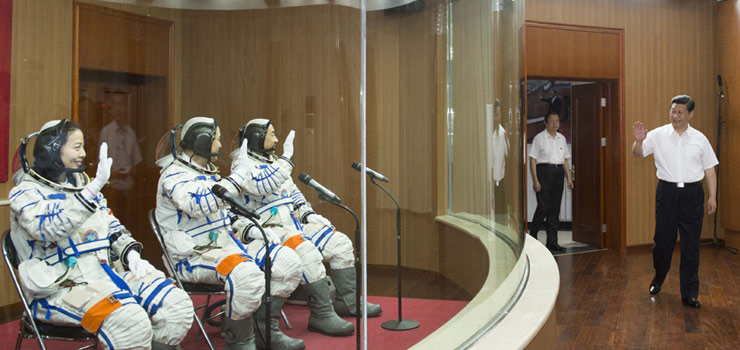 Chinese President Xi Jinping arrived at the Shenzhou-X manned spacecraft launch center in northwest China's Jiuquan on Tuesday to observe the mission.
Chinese President Xi Jinping arrived at the Shenzhou-X manned spacecraft launch center in northwest China's Jiuquan on Tuesday to observe the mission.
China's first aircraft carrier begins sea trials
2013-06-11 11:31:24
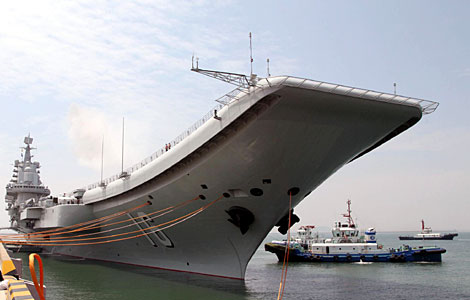 China's first aircraft carrier, the Liaoning, has left its homeport of Qingdao in East China's Shandong province to conduct scientific experiments and sea training, naval authorities said Tuesday.
China's first aircraft carrier, the Liaoning, has left its homeport of Qingdao in East China's Shandong province to conduct scientific experiments and sea training, naval authorities said Tuesday.
A voice that brings the past into the present
2013-06-11 08:00:51
In recent years, digital technologies have not only given new life to ancient works, like the painting, but have become an important bridge between museums and the public.
Experienced hand to lead space mission
2013-06-11 02:07:33
Two more Chinese astronauts will realize their dream of going to space under the guidance of a veteran astronaut in the Shenzhou-X mission on Tuesday.
Tiangong-1 ready for docking and entry
2013-06-10 16:28:31
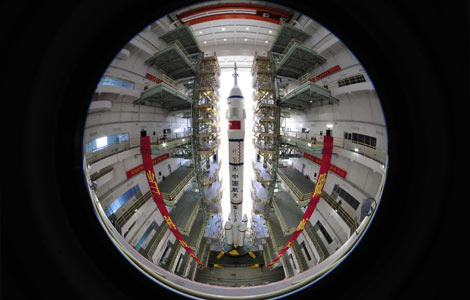 Orbiter Tiangong-1 is ready and in position for the Shenzhou-10 manned spacecraft mission, Wu Ping, spokeswoman for China's manned space program, said Monday.
Orbiter Tiangong-1 is ready and in position for the Shenzhou-10 manned spacecraft mission, Wu Ping, spokeswoman for China's manned space program, said Monday.
Astronaut Zhang Xiaoguang gears up for mission
2013-06-10 20:51:09
 Zhang Xiaoguang's aspirations to travel in space would never have been able to be fulfilled had a classmate failed to give him a hand 28 years ago.
Zhang Xiaoguang's aspirations to travel in space would never have been able to be fulfilled had a classmate failed to give him a hand 28 years ago.
Shenzhou X astronaut Zhang Xiaoguang
2013-06-10 17:04:46
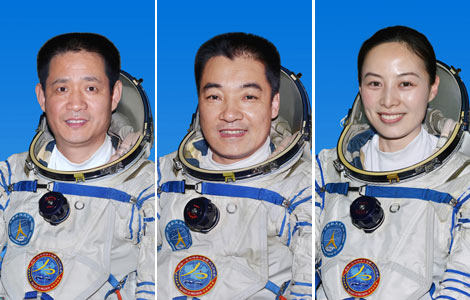 Astronaut Zhang Xiaoguang is a native of Jinzhou City of northeast China's Liaoning Province.
Astronaut Zhang Xiaoguang is a native of Jinzhou City of northeast China's Liaoning Province.
Profile: Chinese astronaut Nie Haisheng
2013-06-10 17:04:46
Chinese astronaut Nie Haisheng is of Han nationality and a member of the Communist Party of China (CPC).
Profile: Female astronaut Wang Yaping
2013-06-10 17:04:46
Female astronaut Wang Yaping is a native of Yantai City in east China's Shandong Province.
Fifth manned mission due on June 11
2013-06-10 23:13:17
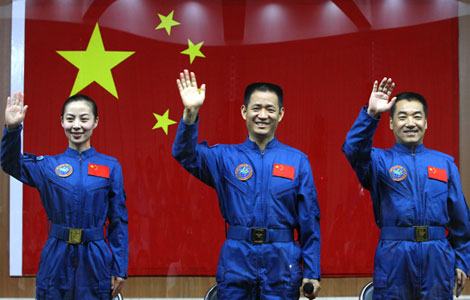 The Shenzhou-X spacecraft was launched at 5:38 pm on Tuesday, sending two men and a woman into space on a mission that will lay the foundation for building a space station.
The Shenzhou-X spacecraft was launched at 5:38 pm on Tuesday, sending two men and a woman into space on a mission that will lay the foundation for building a space station.
